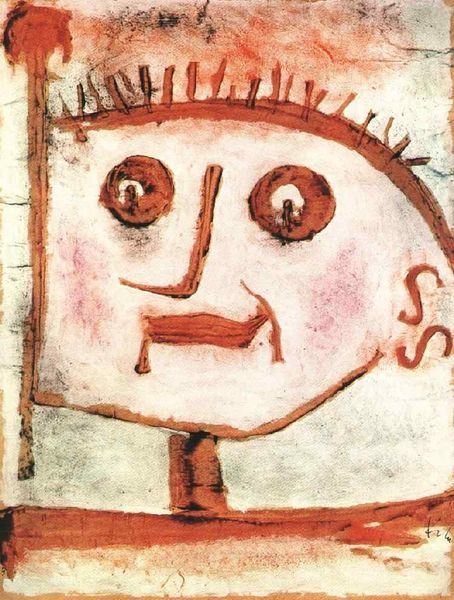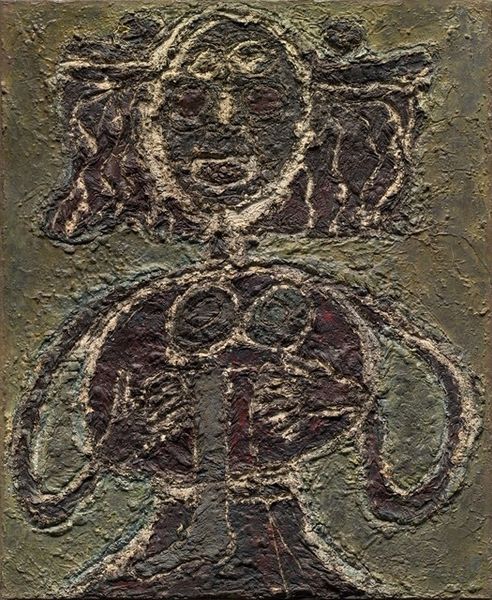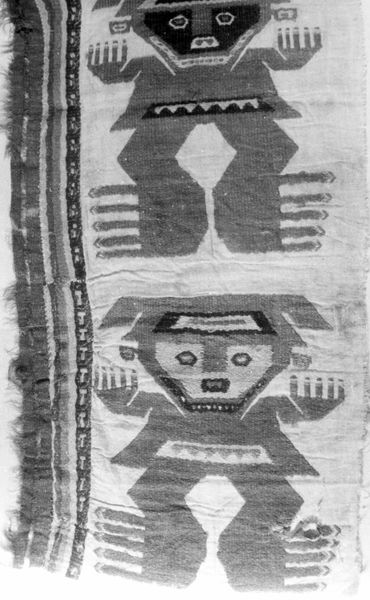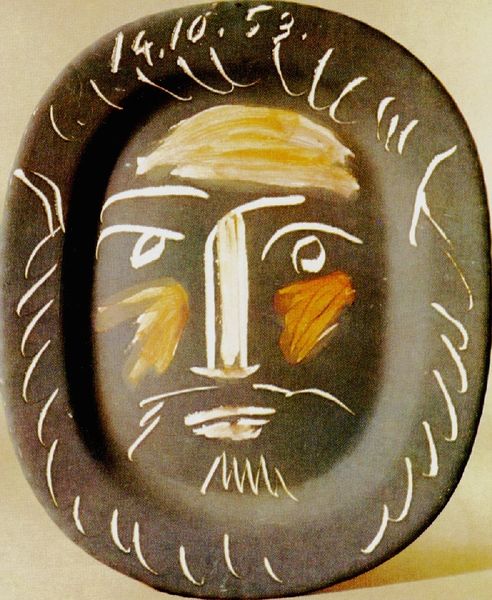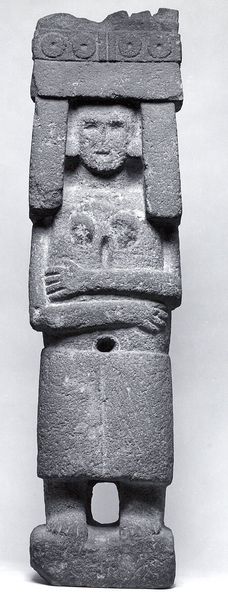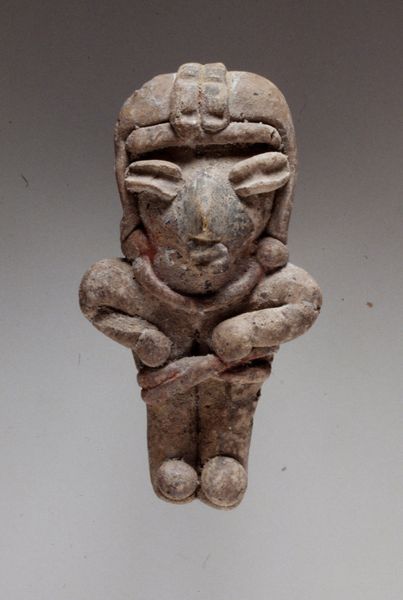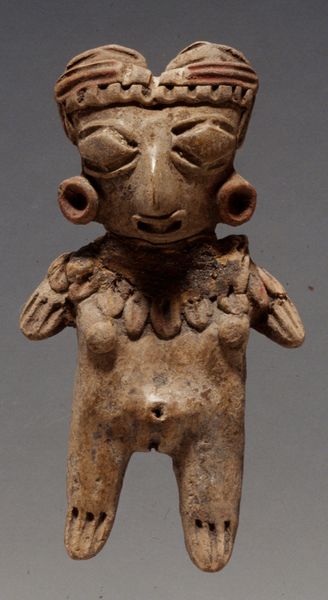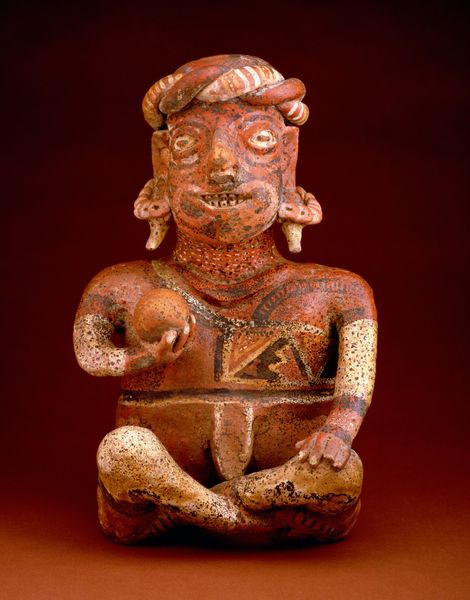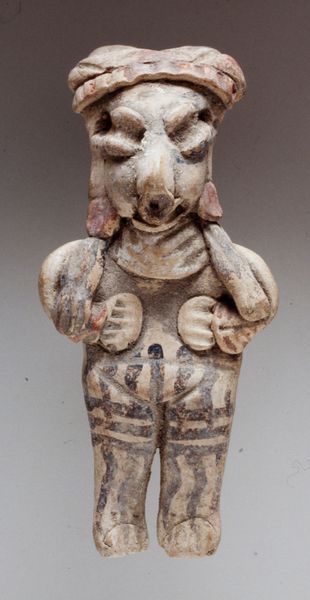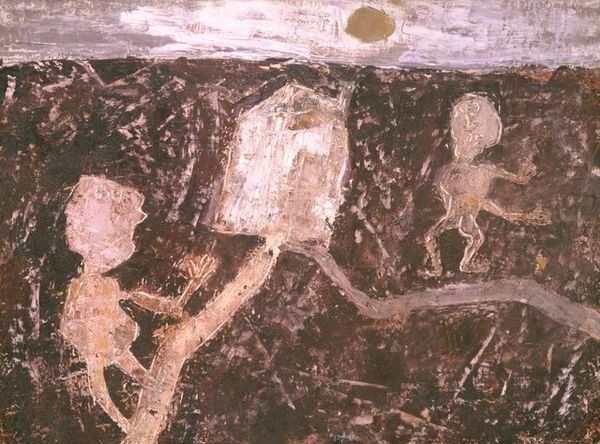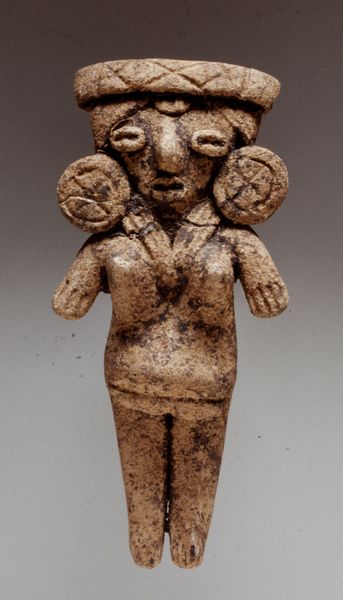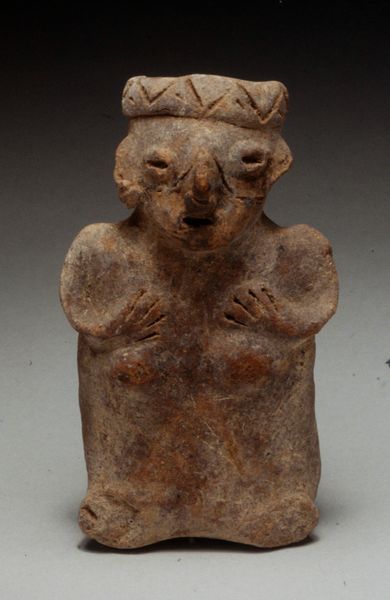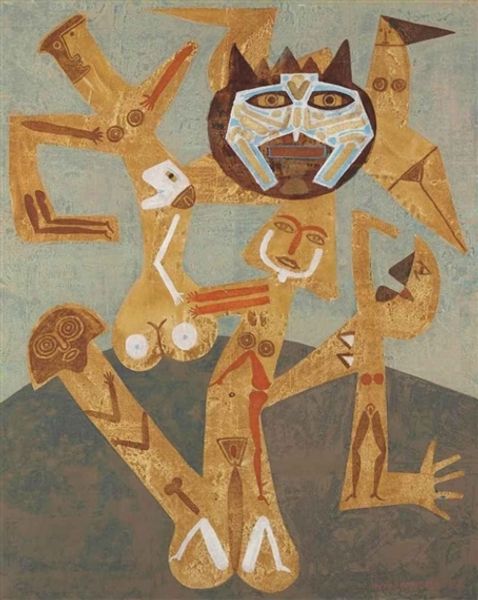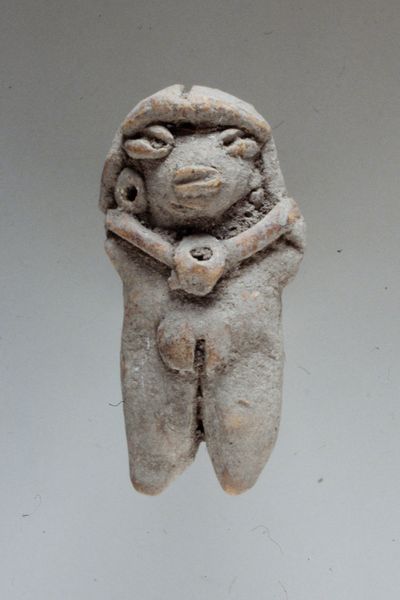
mixed-media, painting
#
portrait
#
mixed-media
#
painting
#
body art
#
outsider-art
#
art-informel
#
abstraction
Copyright: Jean Dubuffet,Fair Use
Curator: Jean Dubuffet’s "Madame Mouche," created in 1945, presents a compelling mixed-media portrait rendered with, I believe, both paint and other materials lending it an earthy, textural quality. Editor: The piece strikes me immediately as raw, almost primal. The figure’s crude, seemingly distressed features exude an air of vulnerability. Curator: Yes, the roughness is quite deliberate. The stark contrasts—the dark ground against those bright, linear features—really emphasize a feeling of unease. Dubuffet, in his practice, very actively rejected conventional ideas around beauty and finish. Note his embrace of materials. This fits with Art Informel rejecting geometric abstraction for a more intuitive form of expression. Editor: Definitely. One cannot divorce this aesthetic from the socio-political backdrop of postwar Europe. Is it an honest and jarring reaction against the atrocities of the time? This seems an active confrontation with the very definitions of what makes us human, and perhaps society itself. What commentary could Dubuffet be suggesting through his subversion of such traditionally revered practices? Curator: Precisely. It's clear here. One sees the structural disruption of a coherent figure—the exaggerated nose, those almost vacant, oversized eyes—pushing representation to its limits, demanding a reassessment. What kind of semiotic strategies are at play in rendering, or distorting this female subject? Editor: Considering the historical treatment of women in art, framing them as ideals or stereotypes, doesn’t “Madame Mouche” actively dismantle such constructs? Her name, implying something diminutive and annoying, feels dripping in irony. Is this also Dubuffet's attempt at allowing the unacknowledged, unbeautiful realities to become subjects, and active commentary on art tradition itself? Curator: You touch upon a crucial aspect: The work's ambiguity resists easy categorization. I read this more simply as the material disruption forming his language—that formal language of destruction is enough. Editor: But aren't forms like these, then, tools, not ends, which should force critical discussion and confront accepted definitions around normalcy, history, gender, representation, and truth. Curator: Indeed. A powerful, confrontational piece with which to ponder these issues! Editor: A stark reminder of the power art holds to challenge norms, urging us to expand how we perceive ourselves, one another, and the structures around us.
Comments
No comments
Be the first to comment and join the conversation on the ultimate creative platform.
